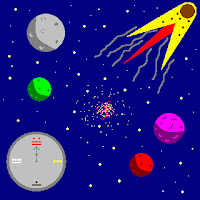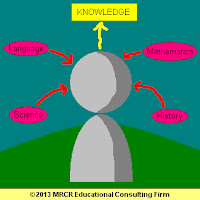As we close our classrooms for the winter, it is important that we acknowledge the educational goals we have met. Goals that we accomplished last year with our previous class of students, goals that we are working on to accomplish with next year's class of students. We have worked together, in collaboration, toward the improvement of our education by achieving these goals.
The goals that we have met are of a great variety: Some are personal goals, others professional. Some can seem simple and insignificant, but these may also prove to be some of our greatest challenges. Yet other goals that we have labeled as complex and of great importance could have been accomplished with a great deal of ease.
Perhaps it is reaching out to a student in school who is having a difficult time breaking out of their shell, and with our help they begin to develop the social skills that will help them interact and socialize with their classmates. Staying after school to help a group of students complete a project or just hang out until they are ready to be picked up from school. Even helping a college during lunch break with the development of a lesson plan, grading homework, or to catch up on with our grades.
Our goals that we have met should be acknowledge and celebrated for we may know know just how meaningful they were to those who were on the receiving end of them. All of us who are in education should make the time to say thank you and congratulations to each other as this year comes to an end this Winter break, and we look back on all the educational goals that we have met.
The goals that we have met are of a great variety: Some are personal goals, others professional. Some can seem simple and insignificant, but these may also prove to be some of our greatest challenges. Yet other goals that we have labeled as complex and of great importance could have been accomplished with a great deal of ease.
Perhaps it is reaching out to a student in school who is having a difficult time breaking out of their shell, and with our help they begin to develop the social skills that will help them interact and socialize with their classmates. Staying after school to help a group of students complete a project or just hang out until they are ready to be picked up from school. Even helping a college during lunch break with the development of a lesson plan, grading homework, or to catch up on with our grades.
Our goals that we have met should be acknowledge and celebrated for we may know know just how meaningful they were to those who were on the receiving end of them. All of us who are in education should make the time to say thank you and congratulations to each other as this year comes to an end this Winter break, and we look back on all the educational goals that we have met.
Author: Manuel R. CortezRodas - Educator



